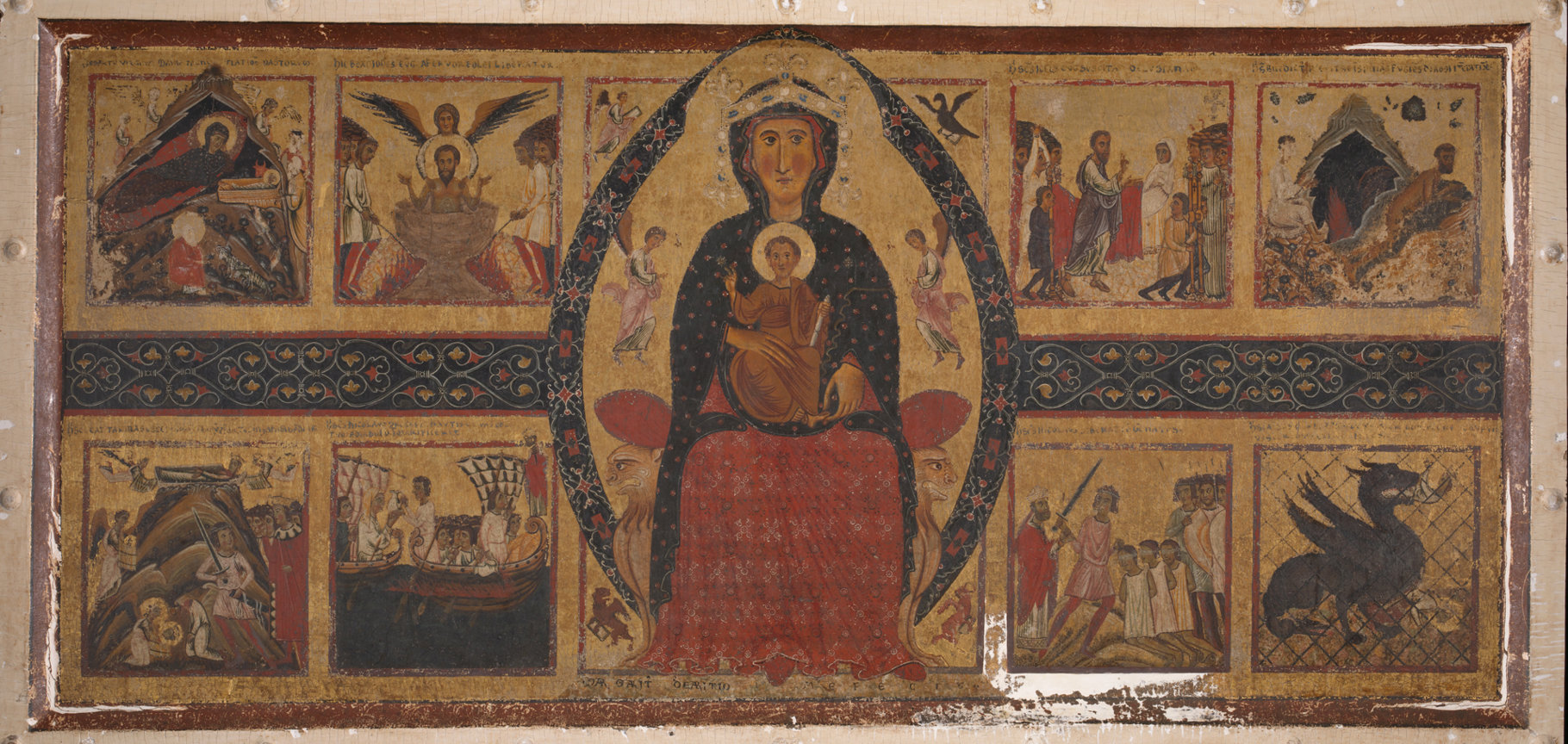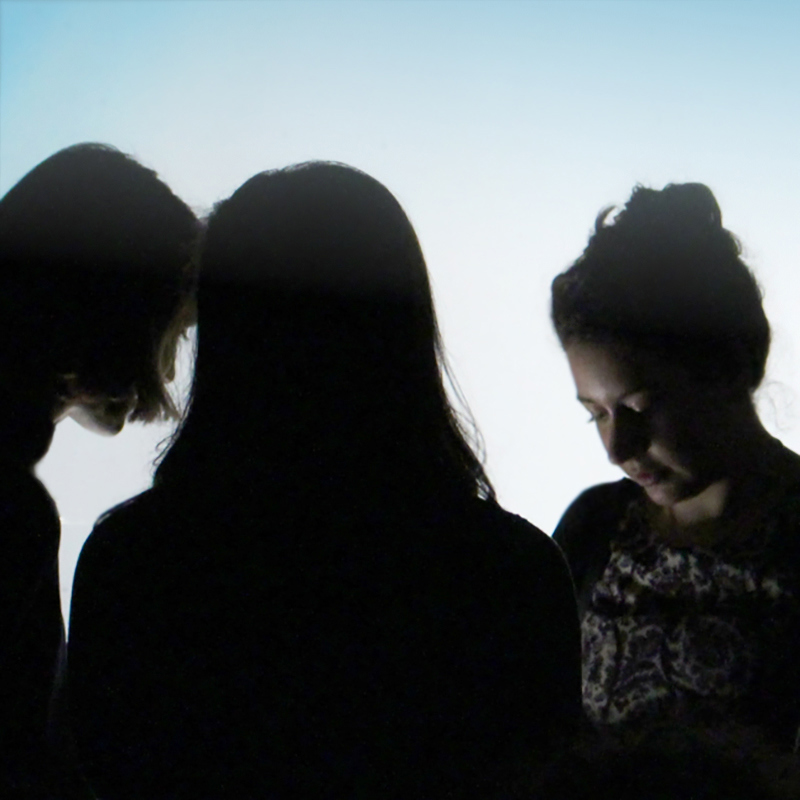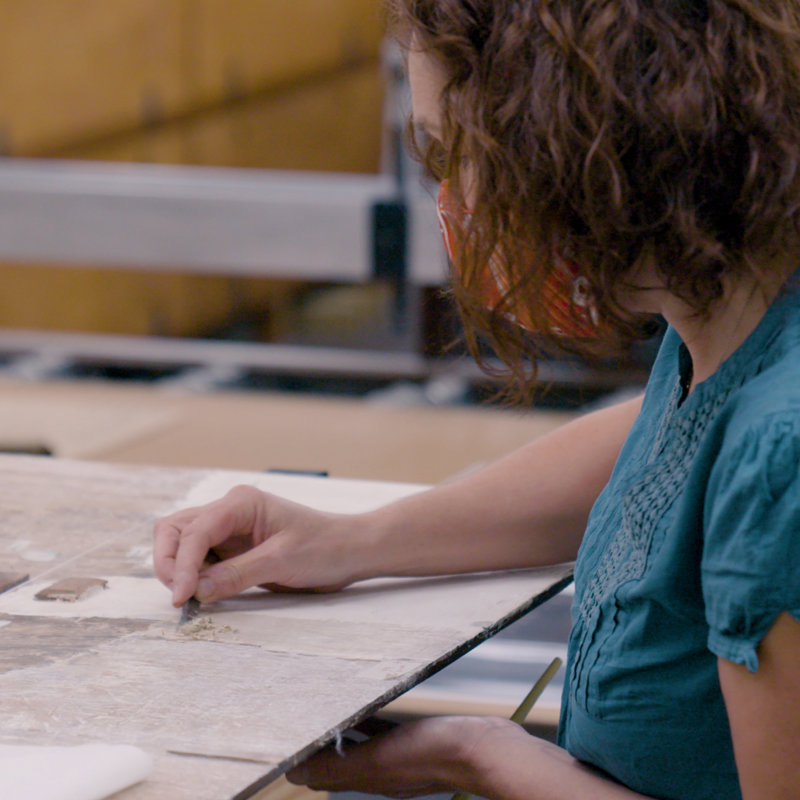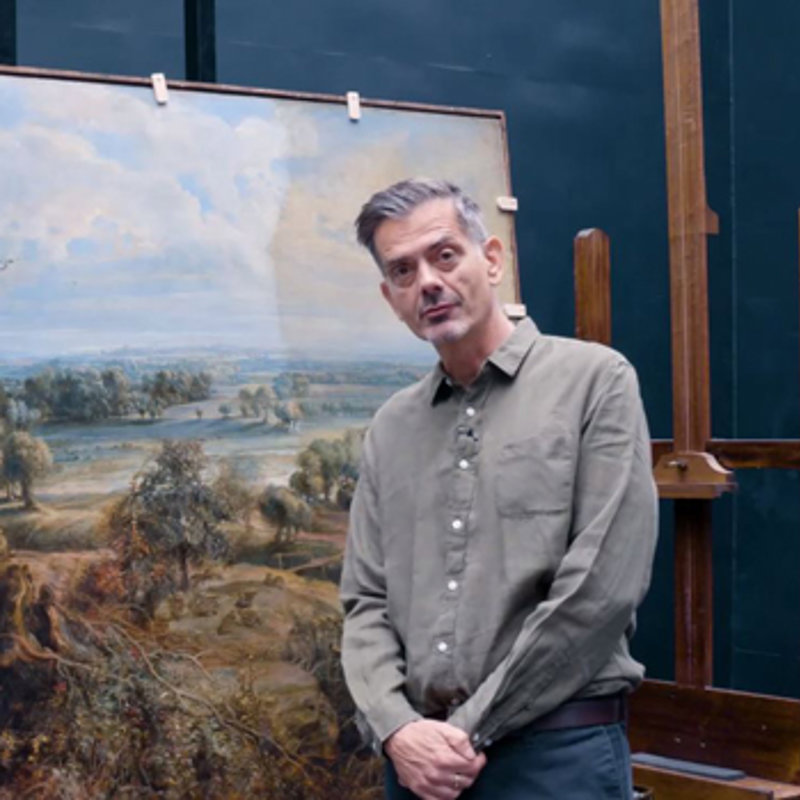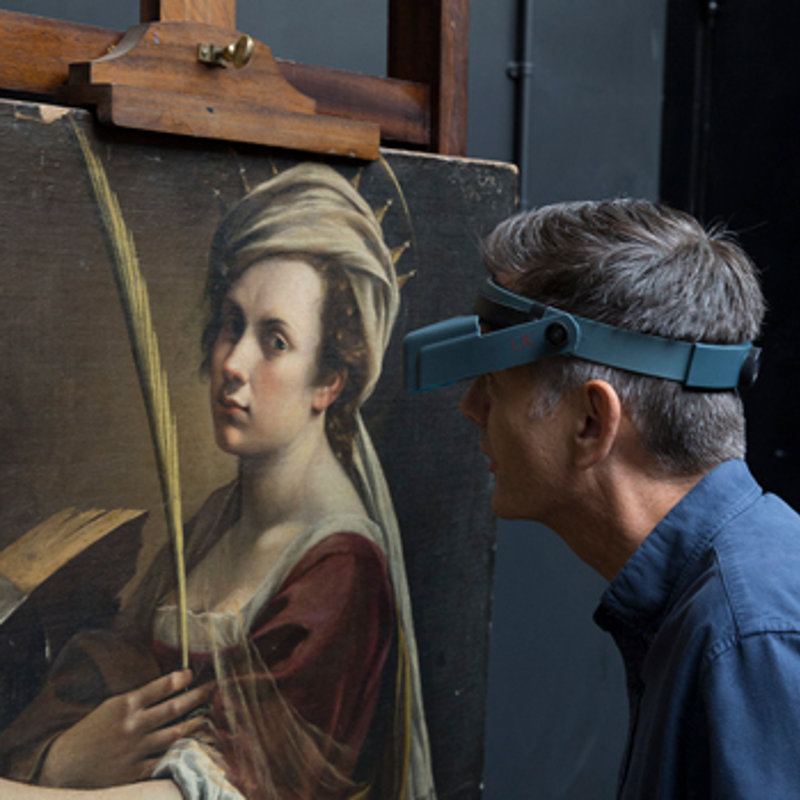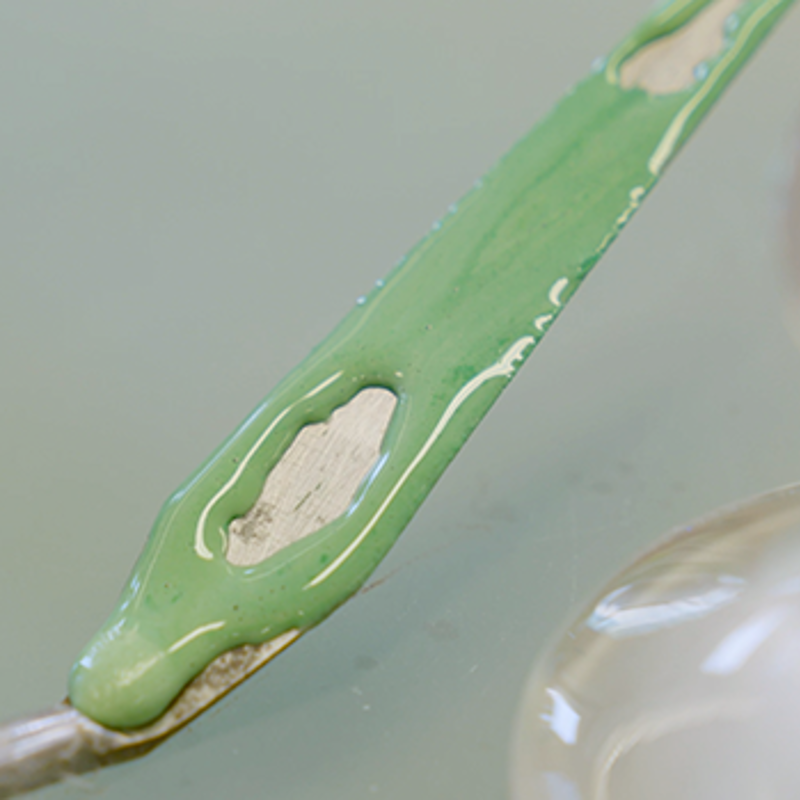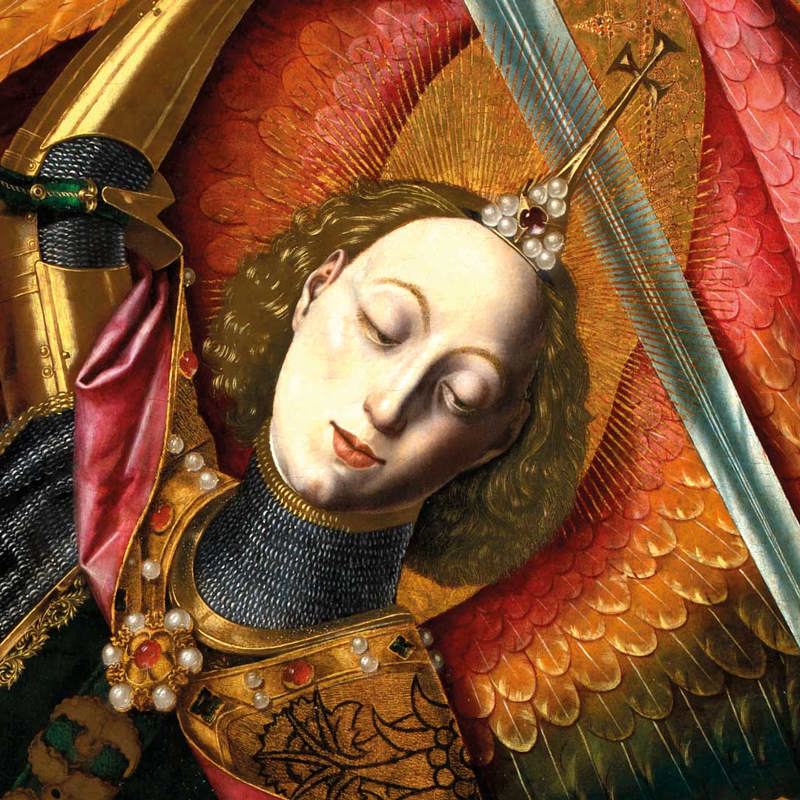Tuscan artist Margarito d’Arezzo’s Virgin and Child Enthroned is the oldest painting in the National Gallery Collection, dating back to 1263-4.
In the first of our behind-the-scenes video series, Assistant Conservator Kristina Mandy demonstrates how conservation work on the painting was carried out:
Why did the painting receive a conservation treatment now?
The painting had last been restored in the early 19th century, and during this treatment the old gilding was stripped off the frame and it was re-gilded with fresh new gold, while the border was overpainted with reddish-brown paint. Though this kind of treatment was considered normal for the time, today we would instead value and preserve the original layers.
Recently we decided the restored frame and overpainted border looked out of keeping with the rest of the painting, and we undertook a conservation treatment to restore these areas of the painting in a more sympathetic way.
What is an ‘engaged' frame?
An engaged frame, like that on the Arezzo painting, means that the frame is integral to the painting, part of the painting itself, and cannot be detached.
What were the stages of conservation?
Frame (carried out by a Frame specialist):
The 19th-century re-gilding and filling putty underneath were removed, revealing the original gesso layer and tiny fragments of original gold.
Painting:
The 19th-century overpaint on the border had started to flake off, revealing the original paint below. After careful cleaning tests, this repaint was removed using a water-based gel. Though the original red paint was quite damaged, cleaning also uncovered a hidden decorative yellow pattern on the border. An area of re-gilding was also removed at the lower right of the painting, as this section had been re-gilded in the same unsympathetic way as the frame.
What are the next steps?
The plan is to re-gild the frame and a small section of the painting in an aged and distressed way that is similar to the gold on the rest of the painting. We are looking into the possibility of applying a decorative scheme between the protruding roundels on the frame. We will also fill and retouch the most prominent losses along the red border.
Unlike past restorations, today we always ensure that any work we carry out on our paintings is reversible and/or removable, should it need to be removed by future generations in years to come.
Sponsored by Nikon, Digital Content Partner


